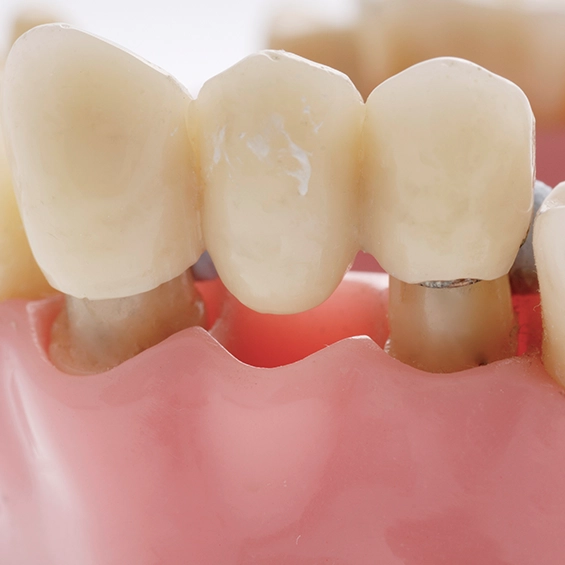
One of the most common dental issues, especially among the older population, is tooth loss. While dental implants are the gold standard for tooth replacement because they look, feel, and function more like natural teeth, this isn’t always an option. Dental implants are expensive and, when you’re replacing more than one tooth, it can be out of the budget.
The most cost-effective way to replace several missing teeth in a row at Glow Up Dentistry in Richmond, TX is with a dental bridge. In this article, we’ll explain more about dental bridges, how they work

A dental bridge is a restorative dental device used to fill in the gap left behind by missing teeth. This device consists of two dental crowns with one or more teeth in between. The crowns may be placed on existing natural teeth on each side of the gap or can be attached to dental implants placed on each side of the gap.
Traditional Bridge
The most common type of dental bridge is a traditional bridge. This type of bridge consists of 2 dental crowns with one or more artificial teeth in between. The crowns are placed on the natural teeth on each side of the gap.
Cantilever Bridge
Maryland Bridge
Implant-supported Bridge


Aftercare
Avoid the following:


Dental bridges typically last about 5 to 7 years, depending on your oral hygiene habits, diet, and lifestyle. If you have good habits and keep up with dental exams and cleanings, you may be able to make your dental bridge last 10 years or more. In fact, according to dental experts, in some cases, a dental bridge may last a lifetime.
In many cases, dental insurance will cover some of the costs associated with this type of treatment. Our office staff will work with your provider to determine coverage so that you don’t have to. If you do not have insurance or your insurance coverage is not adequate, we will be happy to explain our financing options to you.
If you are missing several teeth in a row, a dental bridge may be the best option for you- but the only way to find out is to schedule your consultation. The team at Glow Up Dentistry will be happy to examine your mouth and determine the best treatment option for you.
The most cost-effective way to replace several missing teeth in a row at Glow Up Dentistry in Richmond, TX is with a dental bridge. In this article, we’ll explain more about dental bridges, how they work
If your dental bridge is permanent, you will brush and floss like you normally would with a soft-bristled toothbrush and non-abrasive toothpaste. If your bridge is removable, it should be cleaned like dentures.

TUESDAY: 9 AM – 6 PM
WEDNESDAY: 9 AM – 6 PM
THURSDAY: 9 AM – 6 PM
FRIDAY: 9 AM – 6 PM
SATURDAY: 8 AM – 3 PM
SUNDAY: CLOSED
MONDAY: CLOSED